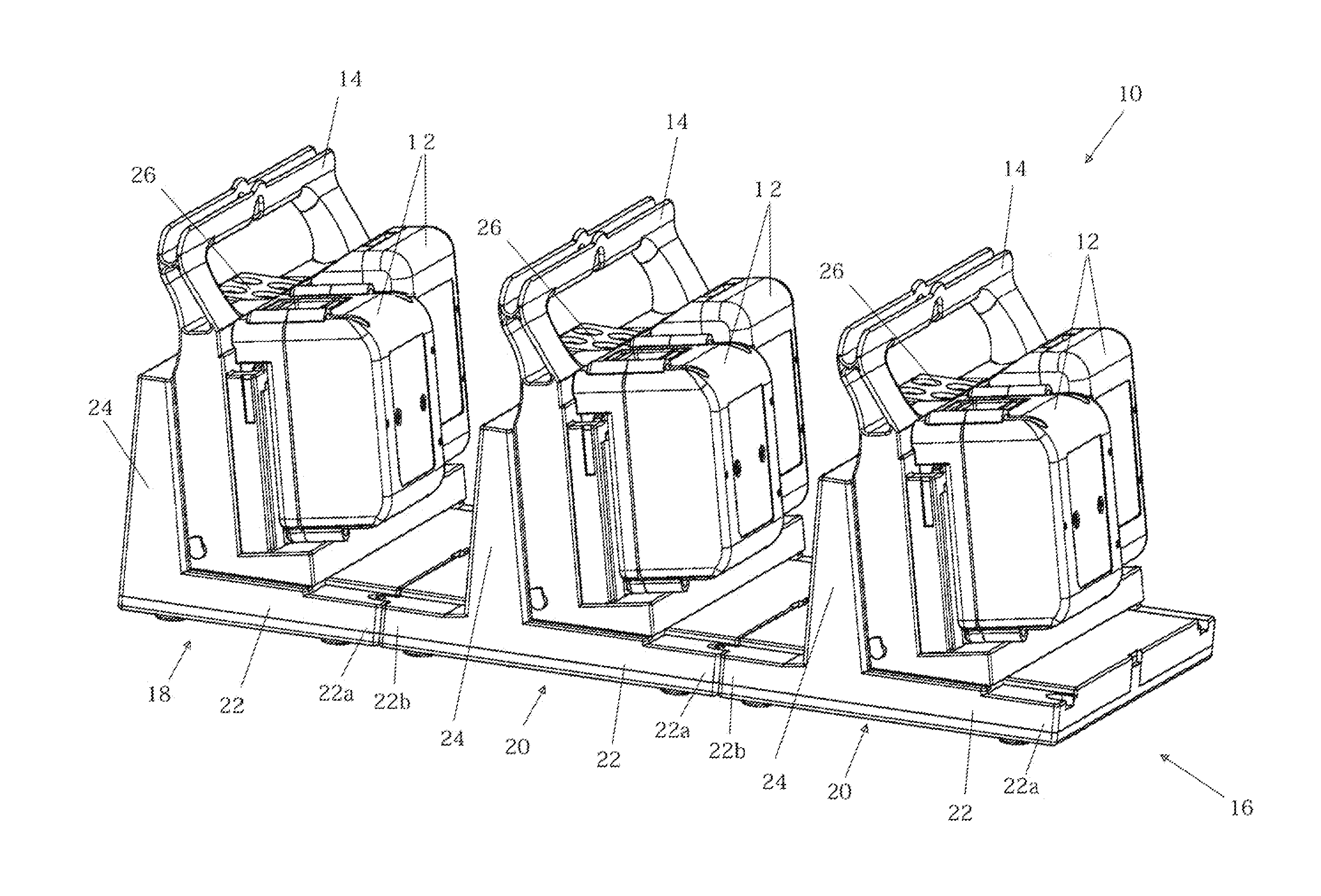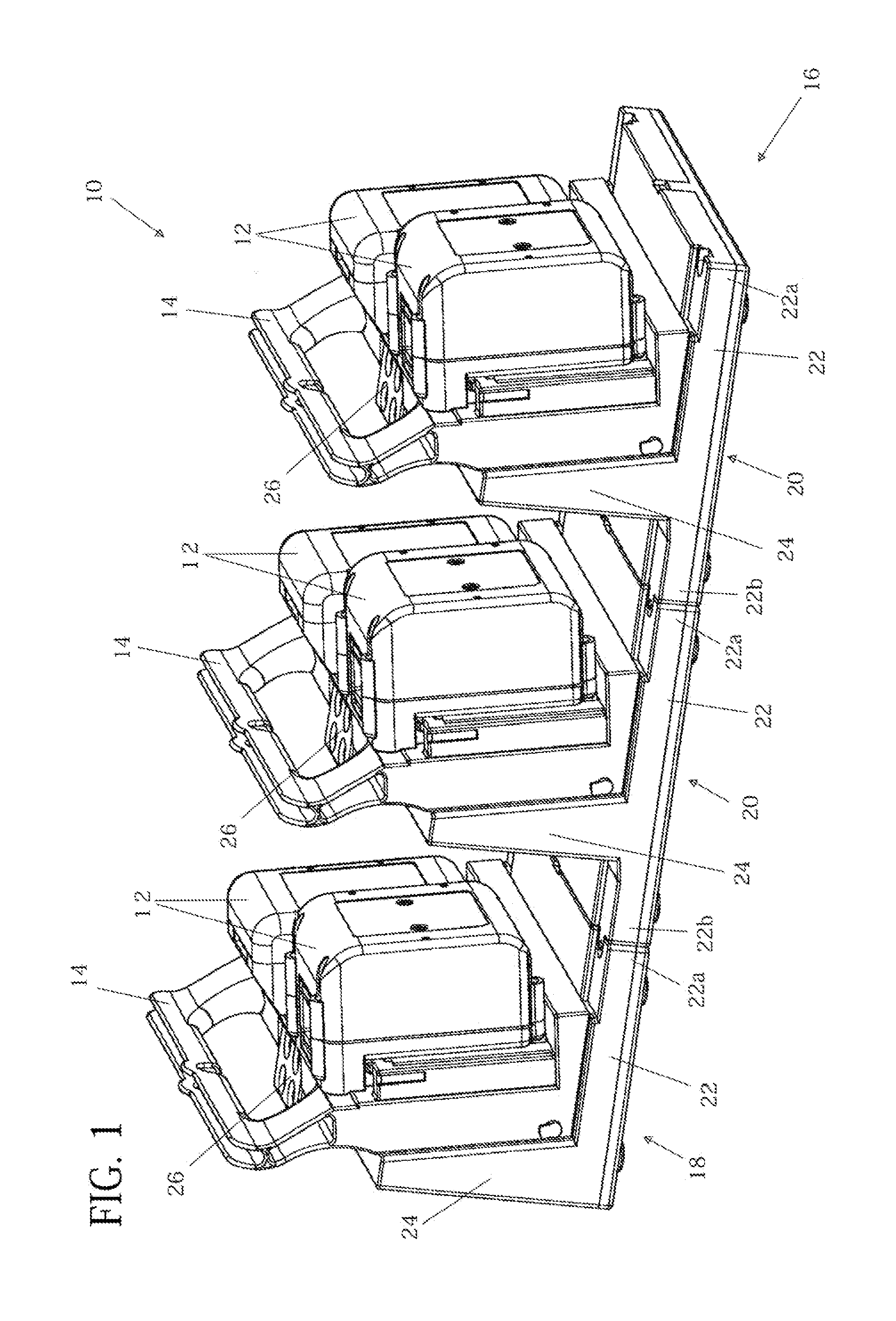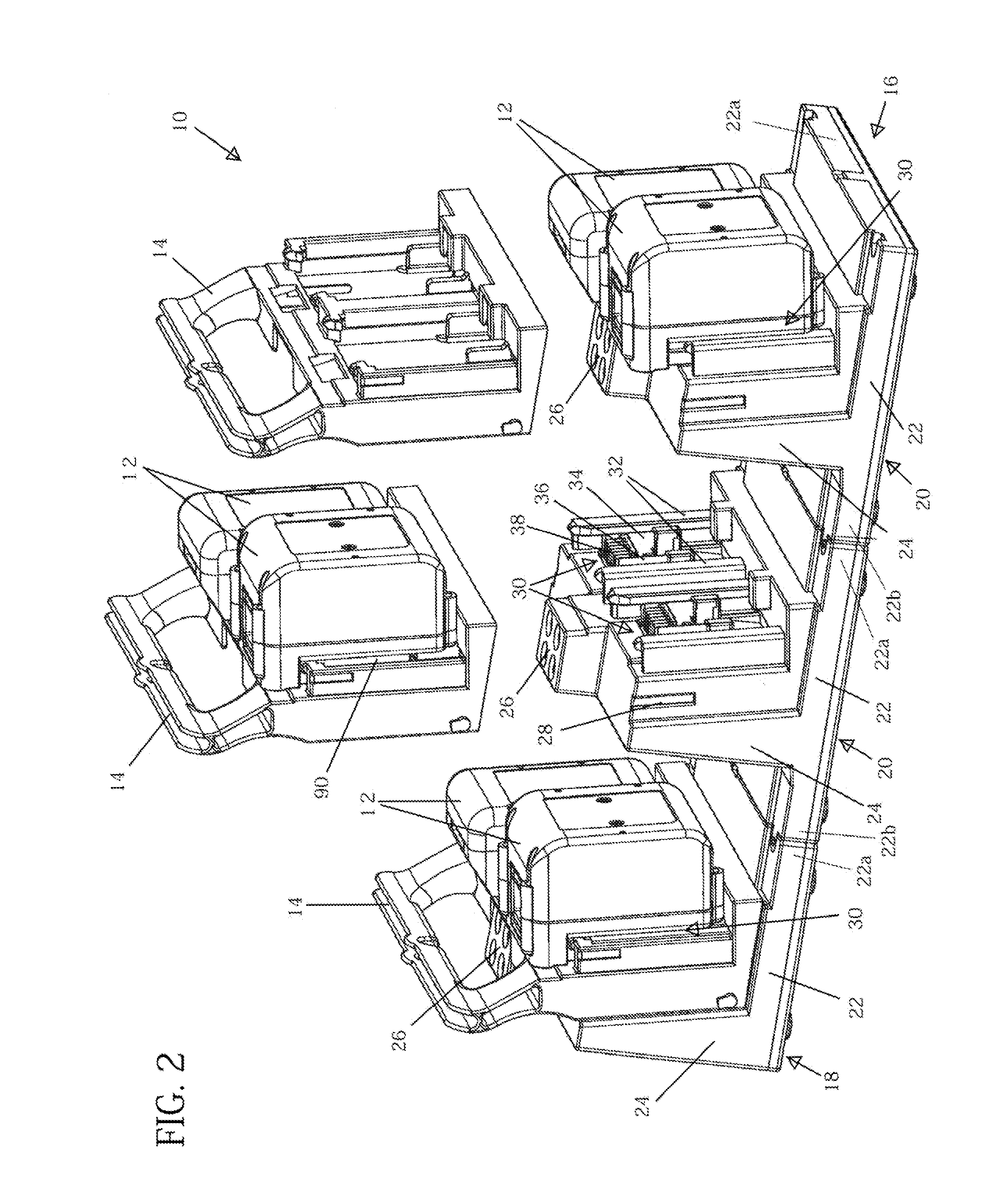Battery System for a Power Tool, As Well As Battery Holder Therefor, Charger, and Charging System
a battery system and power tool technology, applied in the field of power tool battery system, can solve the problems of difficult identification, difficult expansion or scaling, and sudden shutting or shutting of particular battery packs, and achieve the effect of easy expansion or scaling
- Summary
- Abstract
- Description
- Claims
- Application Information
AI Technical Summary
Benefits of technology
Problems solved by technology
Method used
Image
Examples
first embodiment
[0071]A battery system 10 of a first embodiment will now be explained. The battery system 10 is designed to supply electric current (power) to a power tool. As shown in FIG. 1 and FIG. 2, the battery system 10 preferably comprises a plurality of battery packs 12, a plurality of battery holders 14, and a charger 16.
[0072]The battery packs 12 serve as power supplies for the power tool. The battery packs 12 are configured such that they are capable of attaching to and detaching from the power tool in order to supply the stored electric power to the power tool. The battery packs 12 are charged by the charger 16. The plurality of battery packs 12 may be identical or may include two or more different types of battery packs, e.g., having different capacities, different rated (nominal) voltages, etc.
[0073]Each of the battery holders 14 is configured such that at least two of the battery packs 12 can be attached thereto and detached therefrom; in the present embodiment, two battery packs 12 ...
second embodiment
[0104]A charger 216 of a second embodiment will now be explained with reference to FIG. 16A, FIG. 16B, and FIG. 17. The charger 216 of the second embodiment is a modified example of the charger 16 explained in the first embodiment and can use the battery system 10 of the first embodiment. Constituent elements (components) in common with the charger 16 of the first embodiment are assigned identical reference numbers and thus, a repetition of the detailed explanation of their construction and functions may be omitted. In principle, with minor modifications, the charger 216 could also be implemented, e.g., with the electric circuit configuration of either FIG. 14B or 14C, the description of which is incorporated into the present embodiment.
[0105]The charger 216 comprises a plurality of the battery interfaces 30, e.g., three in the present embodiment. Each of the battery interfaces 30 is configured such that one battery pack 12 can be attached thereto and detached therefrom. Each of the...
third embodiment
[0108]A charger 316 of a third embodiment will now be explained, with reference to FIGS. 18-20. The charger 316 of the third embodiment is a modified example of the charger 16 that was explained in the first and second embodiments and can use the battery system 10 of the first embodiment. Constituent elements in common with the charger 16 of the first embodiment are assigned identical reference numbers and thus need not be explained in detail below. Again, in principle, with minor modifications, the charger 316 could also be implemented, e.g., with the electric circuit configuration of either FIG. 14B or 14C, the description of which is incorporated into the present embodiment.
[0109]The charger 316 comprises a main unit 318 (i.e., a master unit) and one or more tray units 320 (i.e., a slave unit). The main unit 318 is configured such that one tray unit 320 can be attached thereto and detached therefrom. Referring to FIG. 19, the main unit 318 comprises a main unit positive terminal ...
PUM
 Login to View More
Login to View More Abstract
Description
Claims
Application Information
 Login to View More
Login to View More - R&D
- Intellectual Property
- Life Sciences
- Materials
- Tech Scout
- Unparalleled Data Quality
- Higher Quality Content
- 60% Fewer Hallucinations
Browse by: Latest US Patents, China's latest patents, Technical Efficacy Thesaurus, Application Domain, Technology Topic, Popular Technical Reports.
© 2025 PatSnap. All rights reserved.Legal|Privacy policy|Modern Slavery Act Transparency Statement|Sitemap|About US| Contact US: help@patsnap.com



